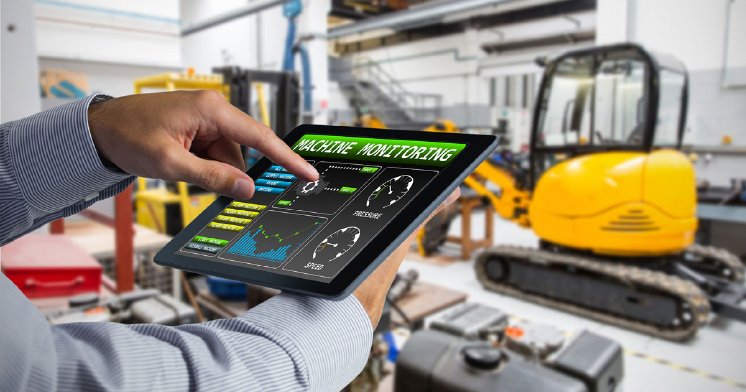See also: Industry 4.0: The Roadmap to a Digital Manufacturing Operation (part 1/3)
Virtual & augmented reality: an actual reality in the shopfloor
The last stage of achievieng smart manufacturing vision allows for Industry 4.0 functionalities to kick in. The new cyber-physical environment created allows for virtual reality scenarios to kick-in and process owners can see the in-plant process from end-to-end in real-time and make dynamic changes through the MES application to alter the performance to meet the required process objectives.
Once the Digital Twin of the plant operation is established and with an MES application enabled with IOT, the next stage of the roadmap to digital manufacturing would be implement Augmented Reality scenarios, with the use of mobile devices or VR enabled glasses or other similar digital equipment. Process owners would be able to get exact status of machines, raw material, lots, schedules, issues, just by pointing their device at a piece of equipment, or a pallet of material or finished goods.
Imagine future workers scheduling jobs or maintenance on the go, by analyzing machine status with their VR glasses and problems being detected and corrected even before they can affect the subsequent process. The possibilities of process improvement will be limitless. But the key is to follow the roadmap logically to reach to the stage of digital nirvana, but wait there’s more.
Offline Analytics: Big Data & Machine learning driving better decisions
While online analytics and use of SPC type applications do allow process improvements and CAPA protocols to be implemented, Offline Analytics goes beyond this and that’s why it is considered the last element of the road map, as it is a vast area and has immense potential for value addition.
Offline Big Data will be the top layer of Industry 4.0 and thereby affect the maximum improvements, however it is imperative that all preceding logic is followed as per the roadmap shown, the data collected should be from all aspects of the process and should be enough to allow big data analytics to kick in. If the protocol to get to this stage is followed correctly, Offline Big Data will serve two major functions. First would be to find and solve the known process related problems and the other would be to sort of create machine learning, i.e. to detect new problems and help create new solutions and counter measures.
Offline Analytics will truly be an advanced weapon in the hands of process owners and the top management, as it will take learning beyond what is currently known and transcend process knowledge by adding new inputs which are yet to be perceived.
Future analytics can be divided into four main categories.
- Descriptive analytics - it helps people understand what exactly happened, if an event occurred, why did it occur, what went wrong and where in the process.
- Diagnostic analytics - allows personnel to figure out how the event happened, what went wrong, events which can range from a non-conformance to a delay in a line production, the diagnostic analysis basically allows to gauge the reasons how a problem occurred.
- Predictive analytics - allows users to gauge what might happen next. This is a crucial step in Industry 4.0 environments, where the IT systems, like the MES with their advanced data analytics algorithms can detect future events and allow users to make corrections in order to avoid predicted events even before they actually take place.
- Prescriptive analytics, where IT applications like the MES help users understand what needs to be done. These capabilities are strongly routed in IOT and the ability of the application to compare scenarios, create patterns and find a plausible solution or sets of solutions to current or predicted problems.
With these final two destinations we reach to the end of our digitization roadmap. Planned, systematic and incremental changes to the current process, with high reliance on capable IT applications will be the key to having a fully digital manufacturing. Industry 4.0 is deeply seated in IT and related technologies, which would be outside the comfort zone of most manufacturers. So two critical take-away from this series, one is that in order to have a digital manufacturing operation, follow the given roadmap and second in order to get I 4.0 rely on industry experts and IT application experts who specialize in MES applications.

